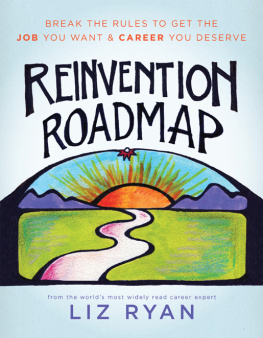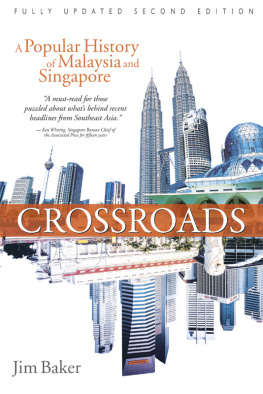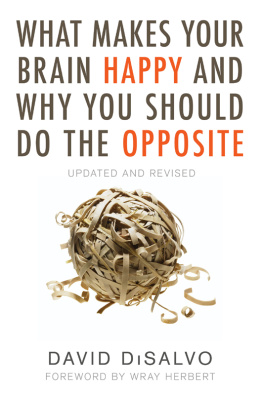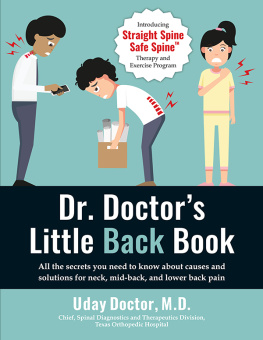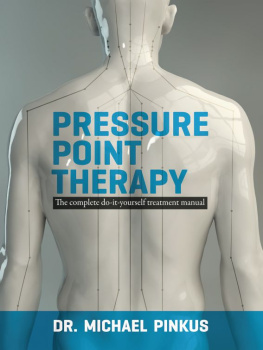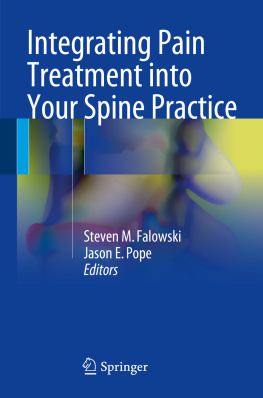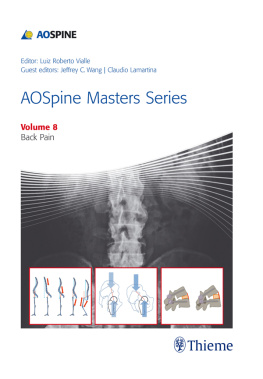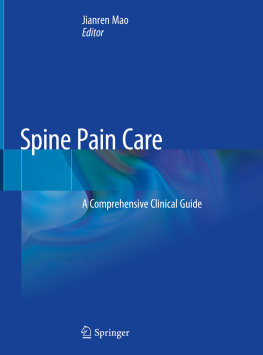INTRODUCTION
Diseases of the spine are quite common in the modern world. Almost every second person living on Earth suffers from them. Even in prosperous Europe, the number of people with diseases of the spine is very large.
According to statistics, out of 1,000 people who first turn to the attending physician for pain in the spine, about 400 are sent to the hospital for examination, of which 30 remain on outpatient treatment, and 5 undergo surgical intervention.
But not only modern man suffers from diseases of the spine.
Paleontologists in the course of research were able to establish that already in Homo erectus - homo erectus - there was osteochondrosis of the lumbosacral spine. In other words, standing on his feet, a person doomed himself to pain in the spine.
Currently, diseases of the spine occur in almost all age groups, this is a common phenomenon among both modern youth and the elderly. As a rule, men suffer from pain in the spine 2 times more often than women. Perhaps this is due to the peculiarities of the anatomical and physiological structure, as well as the fact that representatives of the stronger sex are engaged in heavy physical labor and they often have to lift weights. In recent years, the increase in the number of diseases of the spine (in particular, scoliosis and osteochondrosis) is due to the long stay of representatives of all age groups at the computer. Improper position of the body during work leads to curvature of the spine, and this disease attacks to a greater extent the fragile children's body. Osteochondrosis is a danger to people of all age groups, and its consequences are more serious than the consequences of all types of scoliosis.
For the prevention and treatment of diseases of the spine that develop as a result of degenerative and trophic changes in the spine, as well as as a result of improper posture, the following should be done:
1) often change the position of the body: do not be in the same position for a long time,
get up from the table, move;
2) constantly monitor their posture and properly organize the workplace;
3) play sports, do exercises that are part of the complex of therapeutic and preventive physical education. Useful for the spine swimming and performing exercises on the horizontal bar.
One of the effective means of treating diseases of the spine is massage.
It helps to reduce pain in the affected area, helps to activate the blood supply to diseased areas of the spine, relieves tension and soreness in skeletal muscles. However, the use of massage for therapeutic purposes is permissible only with a slight exacerbation of chronic pain and during the recovery period, it can also be used as a prophylactic.
Methods of conducting massage sessions for diseases of the spine are not particularly complex, they are available to everyone who wants to provide the patient with all possible assistance. This book has the necessary information not only about the symptoms of various diseases of the spine, but also about the methods, forms and techniques of massage used in treatment.
CHAPTER 1. HISTORY OF THE EMERGENCE AND DEVELOPMENT OF MASSAGE
People learned the art of massage a long time ago. The use of this effective method of treatment and prevention of various diseases dates back to the initial stage of development of traditional medicine. Simple massage techniques - such as kneading, stroking, pounding - were owned by many peoples in antiquity; however, the systematic use of these techniques began much later, when the art of medicine was developed and the healing power of massage was fully realized.
What does the word "massage" mean? In various languages, there are synonyms for this word: in Arabic mass - "to touch, gently press"; in Latin massa , "clinging to the hands, touching the fingers"; in Greek masso "to squeeze with your hands"; in Hebrew "mashen" - "to feel"; in French, masser means "to rub".
In other words, massage is a mechanical effect of hands or any object on the surface of the body, produced with the help of special techniques and aimed at obtaining a therapeutic or hygienic effect.
The first to systematize the known methods and techniques of massage were ancient Chinese and ancient Indian doctors. According to sources, in ancient China, the art of massage was developed in the III millennium BC. e. Its most effective use was in the treatment of such serious diseases as rheumatism, dislocations, muscle spasms; in addition, massage served as a means of relaxation and fatigue relief.
Chinese healers rubbed the bodies of their patients with their hands, while producing careful, but quite strong muscle compressions and twitches in the joints.
Indian massage was reduced to gentle kneading of the whole body, starting from the upper extremities and ending with the feet.
As a rule, massage therapists in ancient China and India were specially trained priests. In addition, there were special medical and gymnastic schools, which not only conducted therapeutic massage sessions, but also revealed the secrets of this difficult art.
To date, systematized manuals of Chinese and Indian authors have been preserved, which describe some massage techniques, techniques and techniques for their implementation, as well as give advice on the use of massage techniques for some pathologies. This is the ancient Chinese book "Kong-Fu", written in the III millennium BC. e.; the encyclopedia "San Tsai Tu Gosi", consisting of 64 books and dated to the XVI century AD; the ancient Indian Vedas (Book of Wisdom), dating back to the second millennium BC, and the later work of the Indian healers "Sukruta".
Massage was used in the treatment of various diseases not only in India and China, but also in a number of other countries, and in some of them it was an element of religious worship. Thus, among the aborigines of America and among the peoples who inhabited the islands of the Pacific Ocean and Equatorial Africa, during celebrations dedicated to various gods, chiefs or shamans forced fellow tribesmen to lie on their bellies and trampled on their backs. And there was not a single disease that would not be treated in this way.
A more civilized massage technique existed among the closest neighbors of the Hindus - the inhabitants of Nepal and Sri Lanka (Ceylon). Back in . B.C. on the territory of these states, medical schools were opened, in which massage was a mandatory teaching discipline. In the Ceylon chronicle "Maha-vamasa", dated to the VI century BC. e., a description of some techniques and references to how they were used for a particular physical ailment is given.1000
Therapeutic massage was especially popular among the ancient Assyrians and Egyptians.
Evidence of this can serve as a bas-relief found in the palace of the Assyrian ruler Sancherib, as well as found in . during the excavations of the burial of the Egyptian commander, a papyrus depicting massage techniques: stroking the calf muscles, rubbing the foot, pricking the muscles of the back and buttocks (Fig. 1).1841
As a rule, massage in ancient Egypt was carried out in a bath. According to an eyewitness, "rubbing was common to such an extent that no one left the bath without undergoing a massage. For this rubbed stretch, crumpled, crushed... hands different parts of the body. Then they made several movements in different joints.
All this was done first from the front, then from the back and from the sides. Then, stretching out the arms, they did the same on them: they bent, stretched the various joints of the whole arm, then each finger separately, then moved to the forearm, shoulder, chest, back, bending them in different directions. Not content with flexing, stretching and massaging the joints, all muscles were subjected to the same pressure and rubbing. "
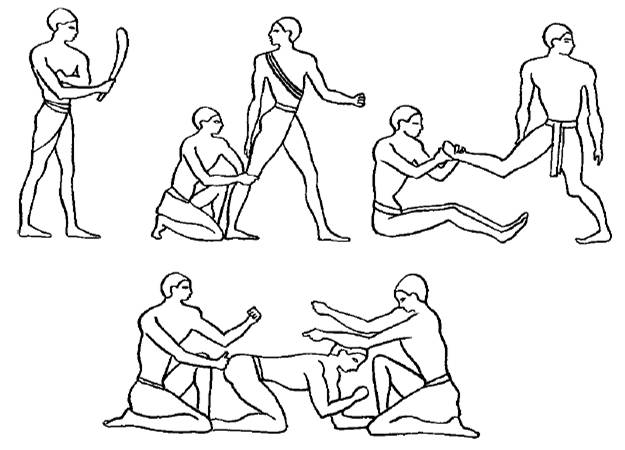
Next page


